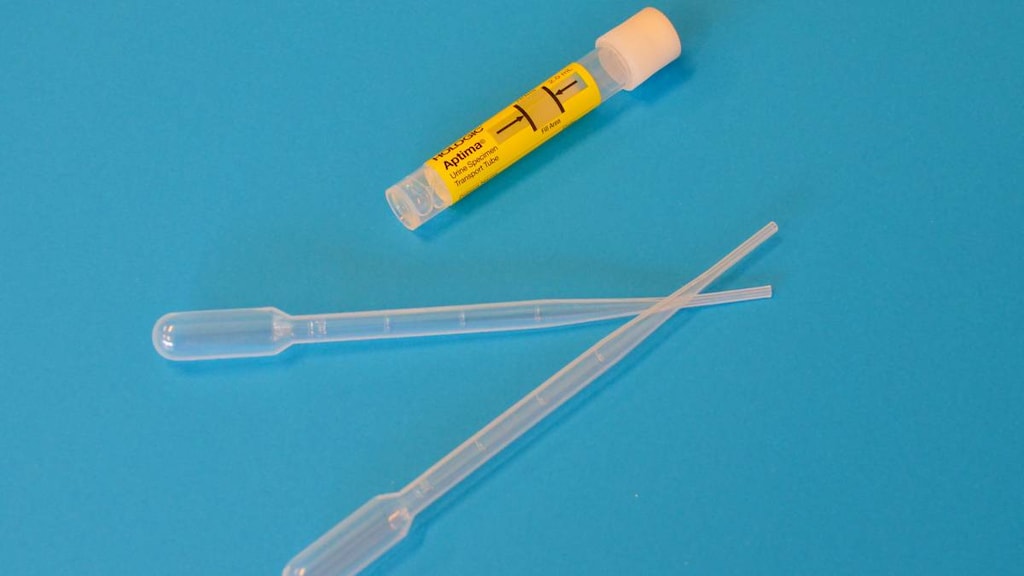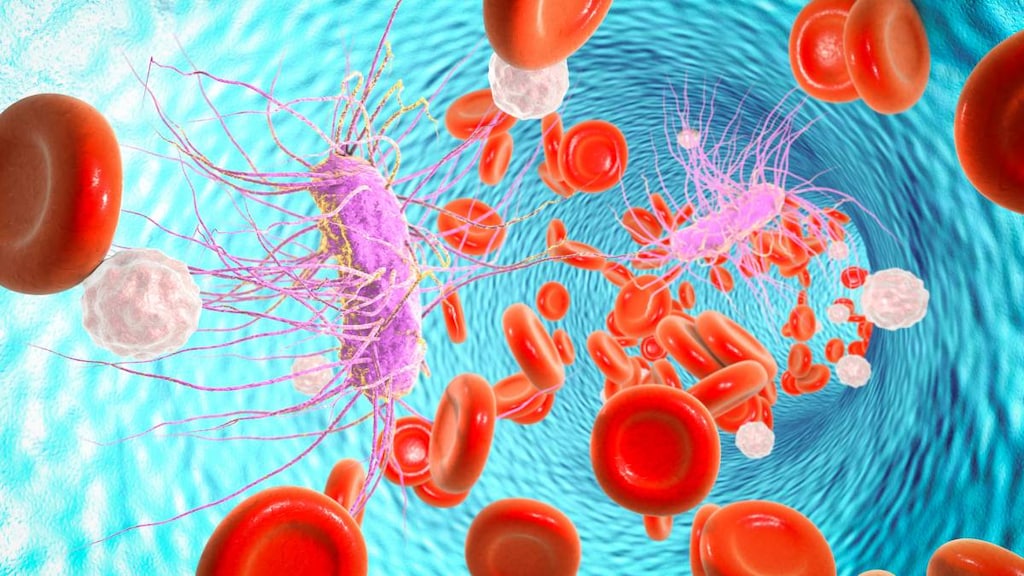Dosage Forms
Excipient information presented when available (limited, particularly for generics); consult specific product labeling. [DSC] = Discontinued product
Solution Reconstituted, Injection:
Claforan: 500 mg (1 ea [DSC]); 2 g (1 ea [DSC]); 10 g (1 ea [DSC])
Generic: 1 g (1 ea); 2 g (1 ea)
Solution Reconstituted, Injection [preservative free]:
Generic: 500 mg (1 ea); 1 g (1 ea); 2 g (1 ea [DSC]); 10 g (1 ea [DSC])
Solution Reconstituted, Intravenous:
Claforan: 1 g (1 ea [DSC]); 2 g (1 ea [DSC])
Pharmacology
Mechanism of Action
Inhibits bacterial cell wall synthesis by binding to one or more of the penicillin-binding proteins (PBPs) which in turn inhibits the final transpeptidation step of peptidoglycan synthesis in bacterial cell walls, thus inhibiting cell wall biosynthesis. Bacteria eventually lyse due to ongoing activity of cell wall autolytic enzymes (autolysins and murein hydrolases) while cell wall assembly is arrested. Cefotaxime has activity in the presence of some beta-lactamases, both penicillinases and cephalosporinases, of gram-negative and gram-positive bacteria. Enterococcus species may be intrinsically resistant to cefotaxime. Most extended-spectrum beta-lactamase (ESBL)-producing and carbapenemase-producing isolates are resistant to cefotaxime.
Pharmacokinetics/Pharmacodynamics
Distribution
Widely to body tissues and fluids including aqueous humor, ascitic and prostatic fluids, bone; penetrates CSF best when meninges are inflamed
Metabolism
Partially hepatic to active metabolite, desacetylcefotaxime
Excretion
Urine (~60% as unchanged drug and metabolites)
Time to Peak
Serum: IM: Within 30 minutes
Half-Life Elimination
Cefotaxime: Infants ≤1500 g: 4.6 hours; Infants >1500 g: 3.4 hours; Children: 1.5 hours; Adults: 1 to 1.5 hours; prolonged with renal and/or hepatic impairment
Desacetylcefotaxime: 1.3 to 1.9 hours; prolonged with renal impairment (Ings 1982)
Protein Binding
31% to 50%
Use: Labeled Indications
Bacteremia/Septicemia: Treatment of bacteremia/septicemia caused by Escherichia coli, Klebsiella species, and Serratia marcescens, Staphylococcus aureus and Streptococcus species (including Streptococcus pneumoniae).
Bone or joint infections: Treatment of bone or joint infections caused by S. aureus (penicillinase and nonpenicillinase producing strains), Streptococcus species (including Streptococcus pyogenes), and Proteus mirabilis.
CNS infections: Treatment of CNS infections (eg, meningitis, ventriculitis) caused by Neisseria meningitidis, Haemophilus influenzae, S. pneumoniae, Klebsiella pneumoniae, and E. coli.
Genitourinary infections: Treatment of genitourinary infections, including urinary tract infections (UTIs), caused by Staphylococcus epidermidis, S. aureus (penicillinase and nonpenicillinase producing), Citrobacter species, Enterobacter species, E. coli, Klebsiella species, P. mirabilis, Proteus vulgaris, Providencia stuartii, Morganella morganii, Providencia rettgeri, and S. marcescens
Gynecologic infections: Treatment of gynecologic infections, including pelvic inflammatory disease, endometritis, and pelvic cellulitis, caused by S. epidermidis, Streptococcus species, Enterobacter species, Klebsiella species, E. coli, P. mirabilis, Bacteroides species (including Bacteroides fragilis), Clostridium species, and anaerobic cocci (including Peptostreptococcus and Peptococcus species) and Fusobacterium species (including Fusobacterium nucleatum).
Intraabdominal infections: Treatment of intraabdominal infections, including peritonitis caused by Streptococcus species, E. coli, Klebsiella species, Bacteroides species, and anaerobic cocci (including Peptostreptococcus species and Peptococcus species), P. mirabilis, and Clostridium species.
Lower respiratory tract infections: Treatment of lower respiratory tract infections, including pneumonia, caused by S. pneumoniae, S. pyogenes (group A streptococci) and other streptococci (excluding enterococci, [eg, Enterococcus faecalis]), S. aureus (penicillinase and nonpenicillinase producing), E. coli, Klebsiella species, H. influenzae (including ampicillin-resistant strains), H. parainfluenzae, P. mirabilis, S. marcescens, Enterobacter species, and indole-positive Proteus
Skin and skin structure infections: Treatment of skin and skin structure infections caused by S. aureus (penicillinase and nonpenicillinase producing), S. epidermidis, S. pyogenes (group A streptococci) and other streptococci, Acinetobacter species, E. coli, Citrobacter species (including Citrobacter freundii), Enterobacter species, Klebsiella species, P. mirabilis, P. vulgaris, M. morganii, P. rettgeri, S. marcescens, Bacteroides species, and anaerobic cocci (including Peptostreptococcus species and Peptococcus species).
Surgical prophylaxis: Reduce the incidence of certain infections in patients undergoing surgical procedures (eg, abdominal or vaginal hysterectomy, GI and GU tract surgery) that may be classified as contaminated or potentially contaminated; reduce the incidence of certain postoperative infections in patients undergoing cesarean section.
Use: Off Label
Acute bacterial rhinosinusitisyes
Based on the Infectious Diseases Society of America (IDSA) guidelines for acute bacterial rhinosinusitis (ABRS) in children and adults, cefotaxime (among other cephalosporins) is effective and recommended (in combination with clindamycin) for the treatment of ABRS.
Bite wound (animal)yes
Based on the Infectious Diseases Society of America (IDSA) guidelines for the diagnosis and management of skin and soft tissue infections (SSTI), cefotaxime, in combination with clindamycin or metronidazole for anaerobic coverage, is an effective and recommended alternative for treatment of bite wounds.
Gonococcal, disseminated infection (arthritis and arthritis-dermatitis syndrome)yes
Based on Centers for Disease Control and Prevention (CDC) sexually transmitted diseases treatment guidelines, cefotaxime plus azithromycin is considered an alternative regimen for the treatment of arthritis and arthritis-dermatitis syndrome associated with disseminated gonococcal infection. Ceftriaxone plus azithromycin is the preferred regimen. Cefotaxime should not be used for the treatment of gonococcal meningitis and endocarditis due to disseminated gonococcal infection.
Lyme diseaseyes
Based on the Infectious Diseases Society of America (IDSA) guidelines for the clinical assessment, treatment, and prevention of Lyme disease, cefotaxime is an effective and recommended alternative agent for the treatment of acute and late neurologic disease, carditis, and arthritis IDSA [Wormser 2006].
Skin and soft tissue necrotizing infectionsyes
Based on the Infectious Diseases Society of America (IDSA) guidelines for the diagnosis and management of skin and soft tissue infections (SSTI), cefotaxime, in combination with metronidazole or clindamycin, is an effective and recommended alternative for empiric treatment of mixed (polymicrobial) necrotizing infections of the skin, fascia, and muscle; in combination with doxycycline, cefotaxime is effective and recommended for treatment of necrotizing infections of the skin, fascia, and muscle due to Vibrio vulnificus.
Contraindications
Hypersensitivity to cefotaxime, any component of the formulation, or other cephalosporins
Dosage and Administration
Dosing: Adult
Acute bacterial rhinosinusitis, severe infection requiring hospitalization (off-label use): IV: 2 g every 4 to 6 hours for 5 to 7 days (IDSA [Chow 2012])
Bite wound (animal) (off-label use): IV: 1 to 2 g every 6 to 8 hours in combination with clindamycin or metronidazole for anaerobic coverage (IDSA [Stevens 2014])
Brain abscess (empiric treatment): IV: 2 g every 4 to 6 hours in combination with other antimicrobial therapy as warranted (eg, metronidazole) (Arlotti 2010; Brouwer 2014; Kowlessar 2006)
Cesarean section: IM, IV: 1 g IV as soon as the umbilical cord is clamped, then 1 g IV or IM at 6 and 12 hours after the first dose
Gonorrhea, disseminated infections (arthritis and arthritis-dermatitis syndrome) (alternative agent) (off-label use): IV: 1 g every 8 hours in combination with azithromycin. Continue for 24 to 48 hours after improvement begins, then switch to oral therapy guided by antimicrobial susceptibility testing. Total duration of therapy at least 7 days (CDC [Workowski 2015])
Intraabdominal infection (eg, perforated appendix, diverticulitis, intraabdominal abscess), community-acquired (mild to moderate infection in low-risk patients): IV: 2 g every 8 hours in combination with metronidazole (Barshak 2019). May switch to an oral regimen when clinically improved and able to tolerate an oral diet. Total duration of therapy is for 4 to 7 days following adequate source control (SIS/IAI [Mazuski 2017]; SIS/IDSA [Solomkin 2010]); for infections managed without surgical or percutaneous intervention, a longer duration may be necessary (Barshak 2019; Pemberton 2019).
Lyme disease (alternative agent) (off-label use):
Cardiac manifestations: IV: 2 g every 8 hours for 14 to 21 days (IDSA [Wormser 2006])
Neurologic manifestations (eg, meningitis, radiculopathy): IV: 2 g every 8 hours for 10 to 28 days (AAN [Halperin 2007]; IDSA [Wormser 2006])
Meningitis, bacterial: As a component of empiric therapy (community-acquired infections) or pathogen-specific therapy (eg, Cutibacterium acnes, H. influenzae, N. meningitidis, S. agalactiae, S. pneumoniae, and susceptible gram-negative bacilli; alternative agent for certain pathogens): IV: 2 g every 4 to 6 hours; for empiric therapy, use in combination with other appropriate agents (IDSA [Tunkel 2004]; IDSA [Tunkel 2017])
Pneumonia, community-acquired (CAP): IV: 1 to 2 g every 8 hours (Lim 2009). For critically-ill patients (empiric therapy), use in combination with azithromycin or a respiratory fluoroquinolone (eg, levofloxacin or moxifloxacin) or in non-critically ill patients (empiric therapy), use in combination with a macrolide (preferred) or doxycycline; duration of therapy is ≥5 days (IDSA/ATS [Mandell 2007])
Sepsis: IV: 2 g every 6 to 8 hours
Septic arthritis:
Neisseria gonorrhoeae (alternative agent): IV: 1 g every 8 hours in combination with a single dose of azithromycin. Duration of cefotaxime is 7 to 14 days, depending on clinical status and response to therapy (CDC [Workowski 2015]; Klausner 2019).
Susceptible gram-negative bacilli: IV: 2 g every 8 hours; duration of therapy is 3 to 4 weeks (in the absence of osteomyelitis), including oral step-down therapy (Goldenberg 2019)
Skin and soft tissue necrotizing infections (off-label use):
Polymicrobial infection: IV: 2 g every 6 hours, in combination with metronidazole or clindamycin for empiric therapy of polymicrobial infections. Continue until further debridement is not necessary, patient has clinically improved, and patient is afebrile for 48 to 72 hours (IDSA [Stevens 2014]).
Necrotizing infection due to Vibrio vulnificus: IV: 2 g every 8 hours, in combination with doxycycline. Continue until further debridement is not necessary, patient has clinically improved, and patient is afebrile for 48 to 72 hours (IDSA [Stevens 2014]).
Spontaneous bacterial peritonitis (off-label dose): IV: 2 g every 8 hours (AASLD [Runyon 2012])
Surgical prophylaxis (off-label use): IV: 1 g within 60 minutes prior to surgical incision. Doses may be repeated in 3 hours if procedure is lengthy or if there is excessive blood loss (Bratzler 2013).
Obesity: The ASHP/IDSA/SIS/SHEA guidelines recommend that for patients weighing ≥120 kg (or alternatively defined as BMI >30 kg/m2), a dose of 2 g within 60 minutes prior to surgical incision should be administered (Bratzler 2013).
Dosing: Geriatric
Refer to adult dosing.
Dosing: Pediatric
General dosing, susceptible infection: Infants, Children, and Adolescents: IM, IV: 150 to 180 mg/kg/day in divided doses every 8 hours; maximum daily dose: 8 g/day; higher doses necessary for treatment of meningitis (Bradley 2018; Red Book [AAP 2018])
Acute bacterial rhinosinusitis, severe infection requiring hospitalization: Children and Adolescents: IV: 100 to 200 mg/kg/day divided every 6 hours for 10 to 14 days; maximum dose: 2,000 mg (IDSA [Chow 2012])
Endocarditis, treatment: Children and Adolescents: IV: 200 mg/kg/day in divided doses every 6 hours; maximum daily dose: 12 g/day; treat for at least 4 to 6 weeks; longer durations may be necessary; may use in combination with gentamicin for some organisms (AHA [Baltimore 2015])
Enteric bacterial infections, empiric treatment (HIV-exposed/-positive): Adolescents: IV: 1,000 mg every 8 hours (HHS [OI adult 2018])
Gonorrhea, disseminated infections (including arthritis and arthritis-dermatitis syndrome) (as an alternative to ceftriaxone) (CDC [Workowski 2015]): Adolescents: IV: 1,000 mg every 8 hours in combination with azithromycin for a total duration of at least 7 days.
Intra-abdominal infection, complicated: Infants, Children, and Adolescents: IV: 150 to 200 mg/kg/day divided every 6 to 8 hours; maximum dose: 2,000 mg; use in combination with metronidazole (IDSA [Solomkin 2010])
Lyme disease, cardiac or CNS manifestations or recurrent arthritis: Infants, Children, and Adolescents: IV: 150 to 200 mg/kg/day in divided doses every 6 to 8 hours for 14 to 28 days; maximum daily dose: 6 g/day (AAN [Halperin 2007]; IDSA [Wormser 2006])
Meningitis: Infants, Children, and Adolescents: IV: 225 to 300 mg/kg/day divided every 6 to 8 hours; maximum dose: 2,000 mg/dose; use in combination with vancomycin for empiric coverage (IDSA [Tunkel 2004]; IDSA [Tunkel 2017]); some experts recommend 300 mg/kg/day divided every 4 to 6 hours with a maximum daily dose of 12 g/day (Red Book [AAP 2018])
Peritonitis (peritoneal dialysis) (ISPD [Warady 2012]): Infants, Children, and Adolescents: Intraperitoneal:
Intermittent: 30 mg/kg/dose every 24 hours in the long dwell
Continuous: Loading dose: 500 mg per liter of dialysate; maintenance dose: 250 mg per liter; Note: 125 mg/liter has also been recommended as a maintenance dose (Aronoff 2007)
Pneumonia:
Bacterial pneumonia (HIV-exposed/-positive): Infants, Children, and Adolescents: IV: 150 to 200 mg/kg/day divided every 6 to 8 hours; maximum dose: 2,000 mg/dose (HHS [OI adult 2018]; HHS [OI pediatric 2016])
Community-acquired pneumonia (CAP): Infants >3 months, Children, and Adolescents: IV: 50 mg/kg/dose every 8 hours; maximum dose: 2,000 mg; Note: May consider addition of vancomycin or clindamycin to empiric therapy if community-acquired MRSA suspected. In children ≥5 years, a macrolide antibiotic should be added if atypical pneumonia cannot be ruled out (IDSA/PIDS [Bradley 2011]).
Salmonellosis (HIV-exposed/-positive): Adolescents: IV: 1,000 mg every 8 hours (HHS [OI adult 2018])
Skin and soft tissue infections, necrotizing: Infants, Children, and Adolescents: IV: 50 mg/kg/dose every 6 hours in combination with metronidazole or clindamycin; maximum dose: 2,000 mg/dose. Continue until further debridement is not necessary, patient has clinically improved, and patient is afebrile for 48 to 72 hours (IDSA [Stevens 2014]).
Surgical prophylaxis: Children and Adolescents: IV: 50 mg/kg within 60 minutes prior to the procedure; may repeat in 3 hours if procedure is lengthy or if there is excessive blood loss; maximum dose: 1,000 mg; a larger maximum dose (2,000 mg) is recommended for obese patients (ASHP/IDSA [Bratzler 2013])
Urinary tract infection: Infants and Children 2 to 24 months: IM, IV: 150 mg/kg/day divided every 6 to 8 hours (AAP 2011)
Dosing: Obesity
Refer to indication-specific dosing for obesity-related information (may not be available for all indications).
Reconstitution
IM: Reconstitute vials with SWFI or bacteriostatic water for injection; dilute with 2 mL for the 500 mg vial (resulting concentration ~230 mg/mL), 3 mL for the 1 g vial (resulting concentration ~300 mg/mL), and 5 mL for the 2 g vial (resulting concentration 330 mg/mL). Shake to dissolve.
IV: Reconstitute vials with ≥10 mL SWFI; resulting concentration: 50 mg/mL (500 mg vial), 95 mg/mL (1 g vial), or 180 mg/mL (2 g vial). Shake to dissolve. May be further diluted up to 1000 mL with NS, D5W, D10W, D5NS, D51/2NS, D51/4NS, or LR.
Administration
IM: Inject deep IM into large muscle mass. Individual doses of 2 g may be given if the dose is divided and administered in different IM sites.
IV: Can be administered IV bolus over at least 3 to 5 minutes or as an IV intermittent infusion over 15 to 30 minutes.
Dietary Considerations
Some products may contain sodium.
Storage
Store intact vials below 30°C (86°F). Protect from light. Reconstituted solution is stable for 12 to 24 hours at room temperature, 7 to 10 days when refrigerated, for 13 weeks when frozen. For IV infusion in NS or D5W, solution is stable for 24 hours at room temperature, 5 days when refrigerated, or 13 weeks when frozen in Viaflex plastic containers. Thawed solutions of frozen premixed bags are stable for 24 hours at room temperature or 10 days when refrigerated.
Drug Interactions
Aminoglycosides: Cephalosporins (3rd Generation) may enhance the nephrotoxic effect of Aminoglycosides. Monitor therapy
BCG (Intravesical): Antibiotics may diminish the therapeutic effect of BCG (Intravesical). Avoid combination
BCG Vaccine (Immunization): Antibiotics may diminish the therapeutic effect of BCG Vaccine (Immunization). Monitor therapy
Cholera Vaccine: Antibiotics may diminish the therapeutic effect of Cholera Vaccine. Management: Avoid cholera vaccine in patients receiving systemic antibiotics, and within 14 days following the use of oral or parenteral antibiotics. Avoid combination
Lactobacillus and Estriol: Antibiotics may diminish the therapeutic effect of Lactobacillus and Estriol. Monitor therapy
Probenecid: May increase the serum concentration of Cefotaxime. Management: Avoid cefotaxime doses greater than 6 g/day with concurrent probenecid. Any patients receiving this combination should be monitored closely for evidence of cefotaxime toxicity. Consider therapy modification
Sodium Picosulfate: Antibiotics may diminish the therapeutic effect of Sodium Picosulfate. Management: Consider using an alternative product for bowel cleansing prior to a colonoscopy in patients who have recently used or are concurrently using an antibiotic. Consider therapy modification
Typhoid Vaccine: Antibiotics may diminish the therapeutic effect of Typhoid Vaccine. Only the live attenuated Ty21a strain is affected. Management: Vaccination with live attenuated typhoid vaccine (Ty21a) should be avoided in patients being treated with systemic antibacterial agents. Use of this vaccine should be postponed until at least 3 days after cessation of antibacterial agents. Consider therapy modification
Vitamin K Antagonists (eg, warfarin): Cephalosporins may enhance the anticoagulant effect of Vitamin K Antagonists. Monitor therapy
Test Interactions
Positive direct Coombs', false-positive urinary glucose test using cupric sulfate (Benedict's solution, Clinitest®, Fehling's solution), false-positive serum or urine creatinine with Jaffé reaction
Adverse Reactions
1% to 10%:
Dermatologic: Pruritus (≤2%), skin rash (≤2%)
Gastrointestinal: Colitis (≤1%), diarrhea (≤1%), nausea (≤1%), vomiting (≤1%)
Hematologic & oncologic: Eosinophilia (≤2%)
Local: Induration at injection site (IM ≤4%), inflammation at injection site (IV ≤4%), pain at injection site (IM ≤4%), tenderness at injection site (IM ≤4%)
Miscellaneous: Fever (≤2%)
<1%, postmarketing and/or case reports: Acute generalized exanthematous pustulosis, acute renal failure, agranulocytosis, anaphylaxis, bone marrow failure, brain disease, candidiasis, cardiac arrhythmia (after rapid IV injection via central catheter), cholestasis, Clostridioides (formerly Clostridium) difficile-associated diarrhea, dizziness, erythema multiforme, granulocytopenia, headache, hemolytic anemia, hepatitis, increased blood urea nitrogen, increased gamma-glutamyl transferase, increased lactate dehydrogenase, increased serum alkaline phosphatase, increased serum ALT, increased serum AST, increased serum bilirubin, increased serum creatinine, injection site phlebitis, interstitial nephritis, jaundice, leukopenia, local irritation, neutropenia, pancytopenia, positive direct Coombs test, pseudomembranous colitis, Stevens-Johnson syndrome, thrombocytopenia, toxic epidermal necrolysis, urticaria, vaginitis
Warnings/Precautions
Concerns related to adverse effects:
- Arrhythmia: A potentially life-threatening arrhythmia has been reported in patients who received a rapid (<1 minute) bolus injection via central venous catheter.
- Granulocytopenia: Granulocytopenia and more rarely agranulocytosis may develop during prolonged treatment (>10 days).
- Penicillin allergy: Use with caution in patients with a history of penicillin allergy, especially IgE-mediated reactions (eg, anaphylaxis, angioedema, urticaria).
- Superinfection: Prolonged use may result in fungal or bacterial superinfection, including C. difficile-associated diarrhea (CDAD) and pseudomembranous colitis; CDAD has been observed >2 months postantibiotic treatment.
- Tissue inflammation: Minimize tissue inflammation by changing infusion sites when needed.
Disease-related concerns:
- Colitis: Use with caution in patients with a history of colitis.
- Renal impairment: Use with caution in patients with renal impairment; dosage adjustment may be required.
Concurrent drug therapy issues:
- Drug-drug interactions: Potentially significant interactions may exist, requiring dose or frequency adjustment, additional monitoring, and/or selection of alternative therapy. Consult drug interactions database for more detailed information.
Monitoring Parameters
Observe for signs and symptoms of anaphylaxis during first dose; CBC with differential (especially with long courses [>10 days]); renal function
Pregnancy
Pregnancy Risk Factor
B
Pregnancy Considerations
Adverse events have not been observed in animal reproduction studies. Cefotaxime crosses the human placenta and can be found in fetal tissue. An increase in most types of birth defects was not found following first trimester exposure to cephalosporins. During pregnancy, peak cefotaxime serum concentrations are decreased and the serum half-life is shorter. Cefotaxime is approved for use in women undergoing cesarean section (consult current guidelines for appropriate use).
Patient Education
What is this drug used for?
- It is used to treat or prevent bacterial infections.
Frequently reported side effects of this drug
- Diarrhea
Other side effects of this drug: Talk with your doctor right away if you have any of these signs of:
- Liver problems like dark urine, fatigue, lack of appetite, nausea, abdominal pain, light-colored stools, vomiting, or yellow skin
- Bruising
- Bleeding
- Chills
- Sore throat
- Seizures
- Severe loss of strength and energy
- Severe injection site pain like redness, burning, swelling, or irritation.
- Clostridioides (formerly Clostridium) difficile-associated diarrhea like abdominal pain or cramps, severe diarrhea or watery stools, or bloody stools.
- Signs of a significant reaction like wheezing; chest tightness; fever; itching; bad cough; blue skin color; seizures; or swelling of face, lips, tongue, or throat.
Note: This is not a comprehensive list of all side effects. Talk to your doctor if you have questions.
Consumer Information Use and Disclaimer: This information should not be used to decide whether or not to take this medicine or any other medicine. Only the healthcare provider has the knowledge and training to decide which medicines are right for a specific patient. This information does not endorse any medicine as safe, effective, or approved for treating any patient or health condition. This is only a brief summary of general information about this medicine. It does NOT include all information about the possible uses, directions, warnings, precautions, interactions, adverse effects, or risks that may apply to this medicine. This information is not specific medical advice and does not replace information you receive from the healthcare provider. You must talk with the healthcare provider for complete information about the risks and benefits of using this medicine.




